
“Chirin, chirin” – these two little words are the onomatopoeia that describes the sound of a Japanese summer. They belong to the summer tradition of the wind chime, called “furin” in Japanese. The little bells are hung from eaves and balconies of houses and apartments, filling the hot air with the sounds of a cool breeze. This beautiful tradition is carried out at Shinohara Maruyoshi Furin, a unique shop that creates the little summer treasures themselves. LIVE JAPAN joined Japanese and international college students on their experience to make Edo-style wind-chimes themselves, guided by master craftsmen.
Wind Chimes, the Fans and ACs of Olden Times
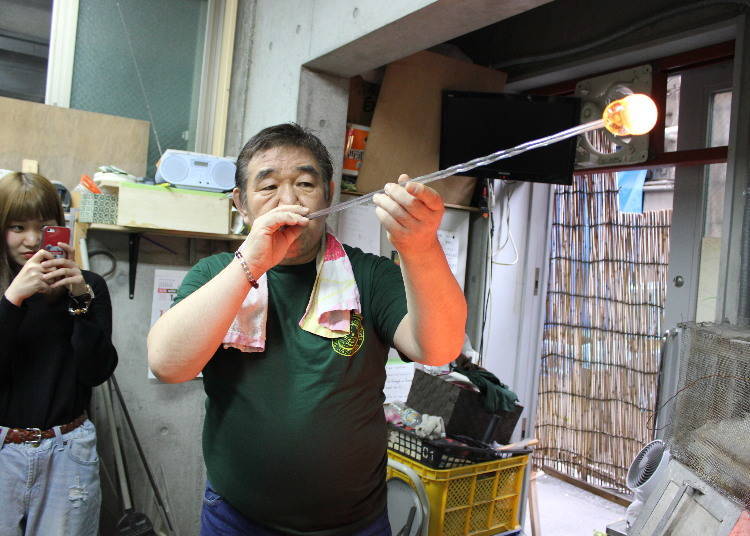
Wind-chimes have their origin in India and China. There, it seemed to have been a way of fortune-telling and the custom came to Japan, where it gradually took its current form. In the beginning, wind-chimes were an expensive luxury that only graced the homes of feudal lords and rich merchants, but in the Edo period, the beautiful custom spread to the common people. In a time without fans and air conditioners, people needed different ways to combat the Japanese summer heat. Wind chimes evoked an image of coolness with their clear appearance and the soft sounds created by a breeze. On top of that, the Japanese people seem to have a deep connection to sounds, and bells also acted as amulets.
Mr. Shinohara is the master of Shinohara Maruyoshi Furin, creating Edo-style wind chimes for 46 years. He speaks both Japanese and English and is happy to teach people how to make their very own wind chime. The first step is glassblowing – giving shape to the glass with one’s breath, without any kind of mold or shape. The molten glass is blazing red and comes out of a kiln that is 1,300°C hot! This is where the Japanese wind chime experience begins.
Wind Chime Making: Shaping the Glass with one’s Breath
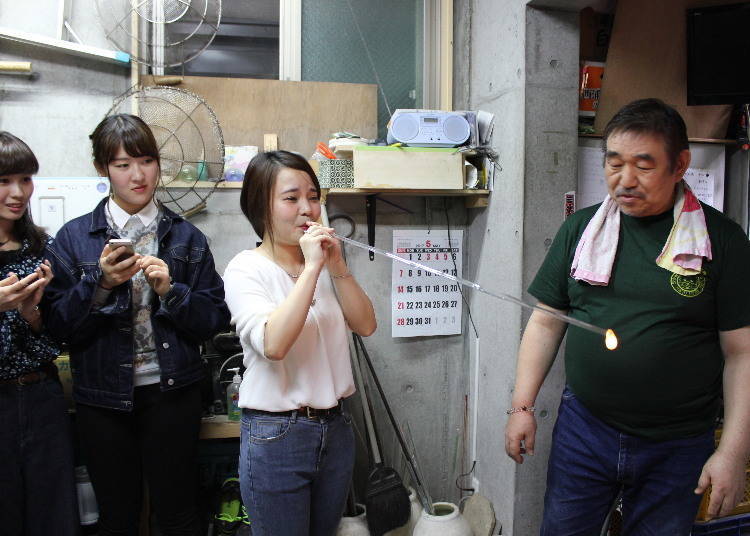
The molten glass is wrapped around the tip of a long pipe, and the first step is to try and blow it into a little ball. Mr. Shinohara stands on the side and offers assistance: “A bit more!” and “This is good!” It seems to take about three years of practice until you can blow it up to the right size properly and nicely.
“You have to form your lips like when you say ‘chuu’! Softly, softly.”
Mr. Shinohara’s humorous explanations are greeted with joy, laughter, and a happy atmosphere.
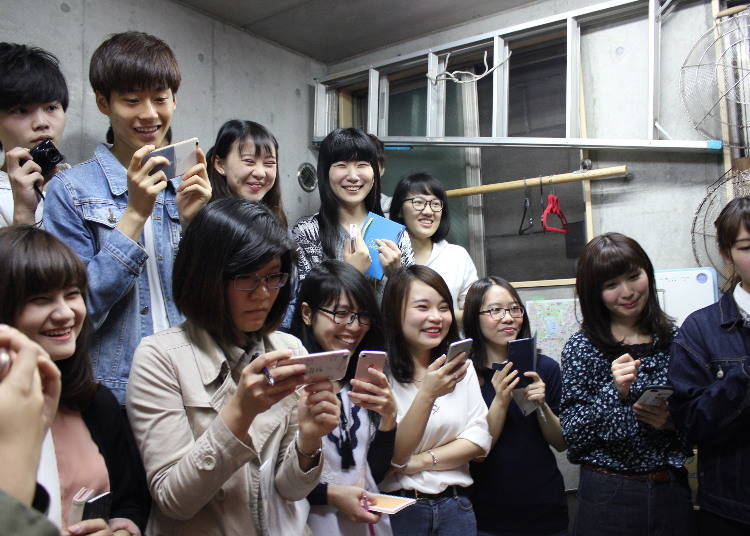
Once the glass inflates to a good size, it is put in the kiln again, rolled, and a small hole is cut in the top before being blown bigger. This step is important for the sound and shape of the wind chime. While the student blows, Mr. Shinohara helps and rotates the pipe a bit to prevent the glass from losing shape. He says that it takes about seven years of practice and experience for one person to be able to do this alone by themselves.
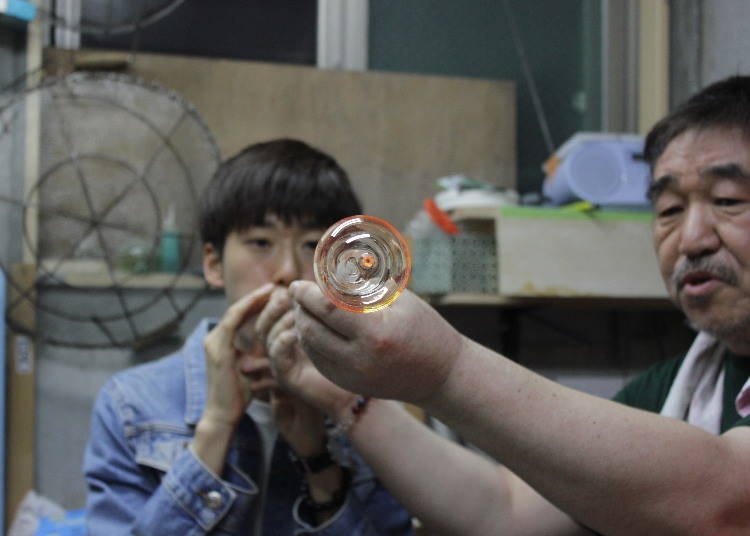
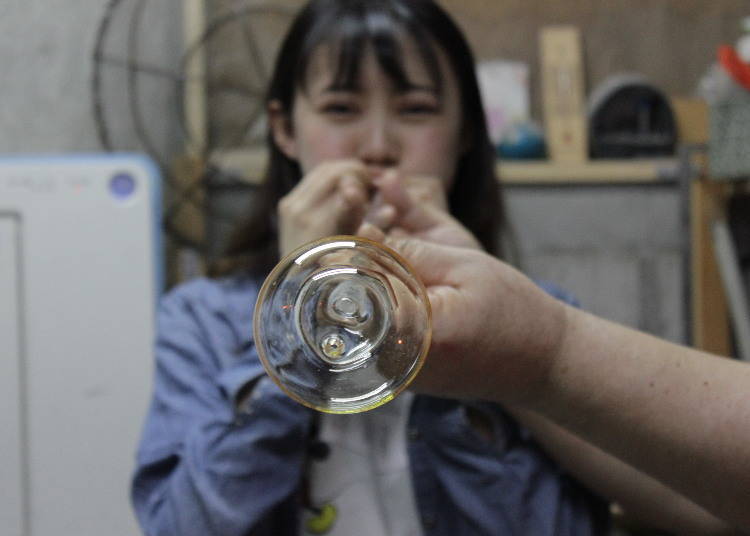
“It is actually harder than it looks! At the beginning, I blew into it too hard, but got help with my second attempt and managed to do it.”
“You have to blow while turning the pipe, so it’s hard to keep your lips on it!
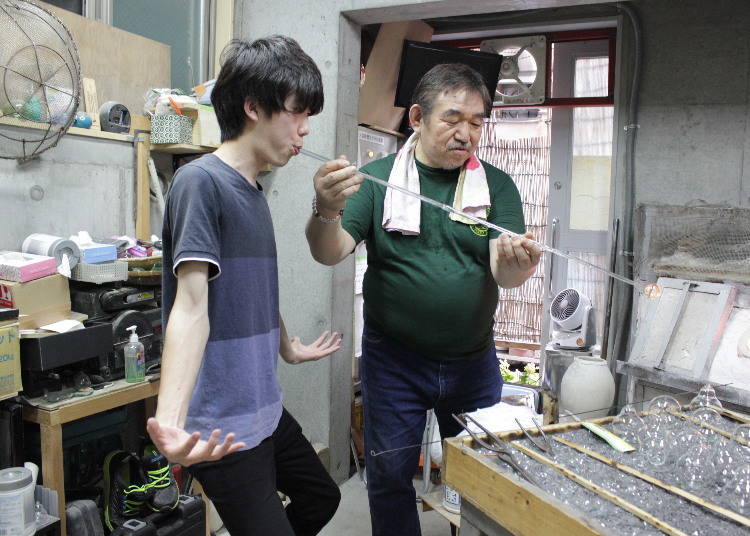
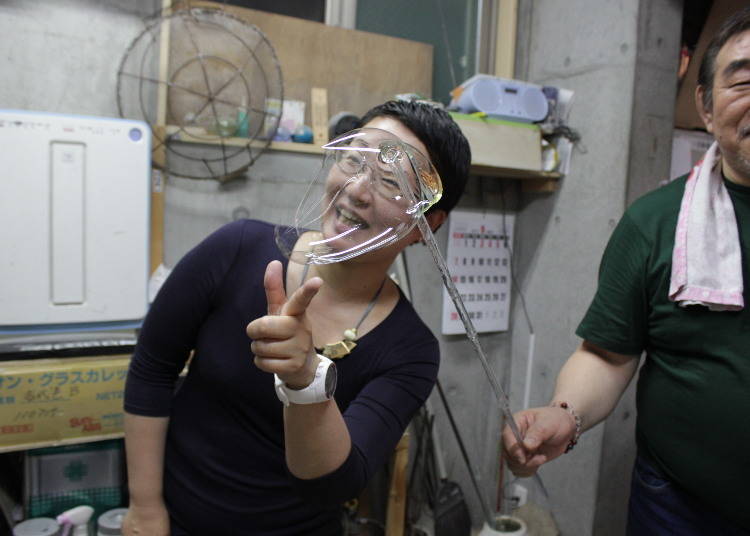
Once the wind chime has inflated to a proper size, its main body is completed.
Decorating your Wind Chime with Your Own Imagination
Once the body of your own wind chime is complete, it’s time to paint! To not dull the glass’ own shine, the watercolor is painted inside the little bell. Pictures drawn in wind chimes traditionally have their very own symbolisms and meanings. The dragonfly, for example, means “moving forward,” which is why it’s also called “the winning insect” because it cannot fly backward. Fireworks rise in the air and explode in a loud bang, and their image has acted as a charm against evil since ancient times. Flowers symbolize gentleness at heart, and so on. It is entirely up to you if you make use of these traditional symbolisms or just freely paint whatever you like.
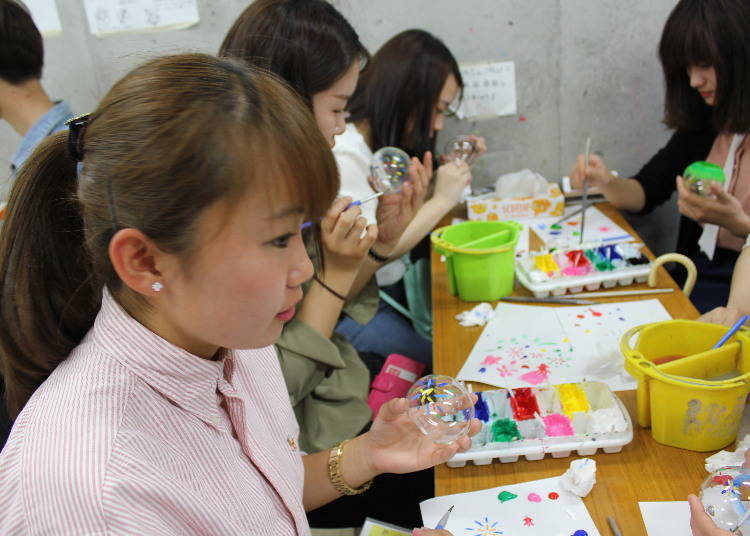
“It’s a summer thing, so I will probably go for fireworks.”
“I like pink, so I’ll draw pink flowers.”
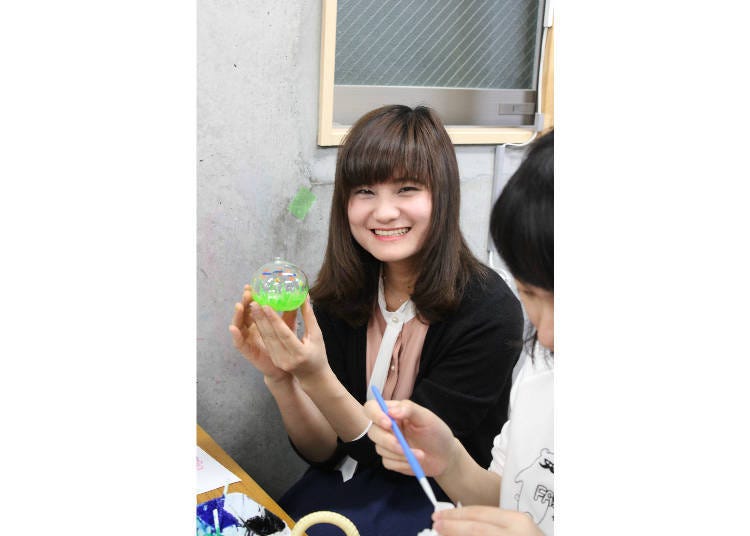
Because it’s watercolor, you can redo your painting as many times as necessary. Since it’s difficult to start your picture on the inside, we recommend that you first do a sketch on the outside – it can be wiped away easily. Once the drawing is done, the body is placed inside – this is the thing that produces the sound when the wind chime is caught in the breeze. If you hold the bell in your hand and shake it gently, you can hear the chime’s gentle sounds.
One-of-a-Kind Wind Chimes – a Piece of Japanese Culture
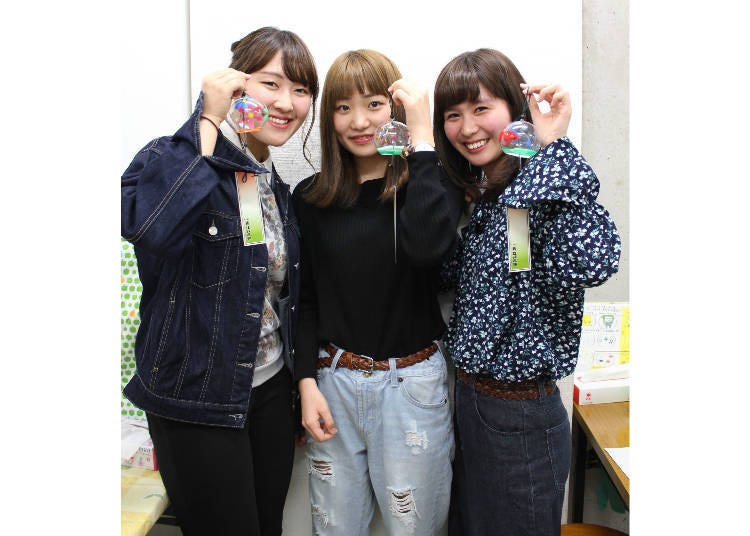
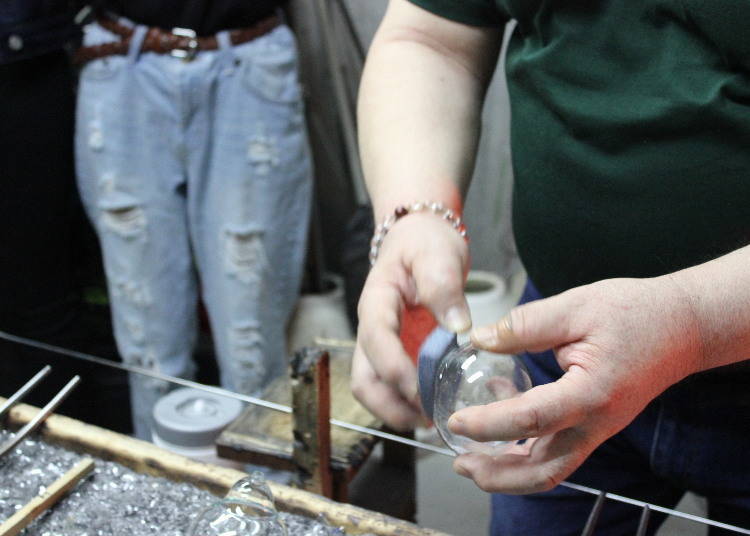
Nineteen students all had the chance to make their very own Japanese wind chime. How was the experience?
“The inflation of the glass determines the sound of the wind chime, and I am happy that mine has a relaxing deep tone now.” (Nationality: Japan)
“I had fun experiencing this traditional craft. In a world that develops and moves very fast, I was able to feel the pride of a craftsman making something calmly.” (Nationality: China)
“I was a bit worried if I could do it at first, but being encouraged to make ‘the best wind chime in the world’ really was lovely.” (Nationality: Japanese)
“I was touched by the artisan’s spirit who has been doing this for over 45 years. He’s so knowledgeable about the history of his own craft, and the traditional method is also amazing. The paintings were beautiful and left an impression. Because there are craftsmen like this around, Japan is known to have great hand-made things.” (Nationality: Korea)
“It was nice to feel the atmosphere of old Edo in the small shop, and the experience was amazing. I had a lot of fun and am so happy with my finished wind chime.” (Nationality: Vietnam)
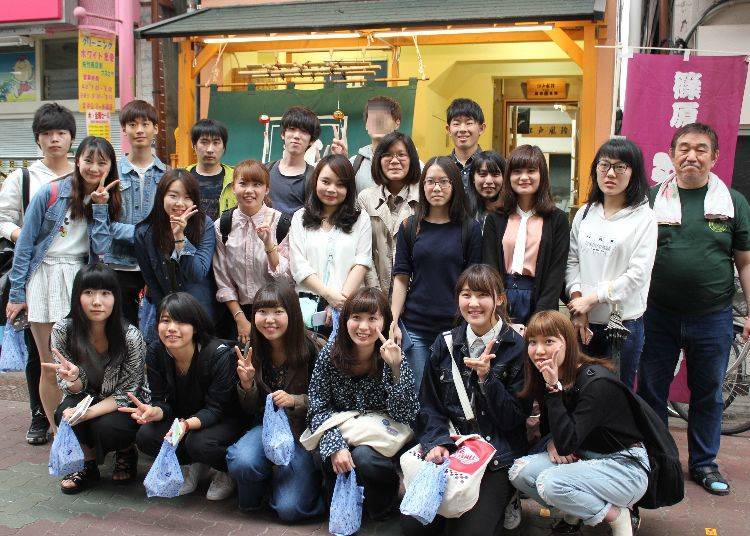
The wind chimes are wrapped in packing material and put in a box so that you can safely take them home. With a one-of-a-kind shape, a one-of-a-kind picture drawn on it, and a one-of-a-kind sound, they are an amazingly unique and very traditional souvenir of Japan, one that we recommend to each and every visitor. And once you’re back at home and hear the soft “chirin, chirin,” you’ll doubtlessly remember your wonderful experience at Shinohara Maruyoshi Furin in Asakusa.
-
Shinohara Maruyoshi Furin江戸風鈴 篠原まるよし風鈴
- Address 4-25-10 Taito, Taito-ku, Tokyo-to 110-0016
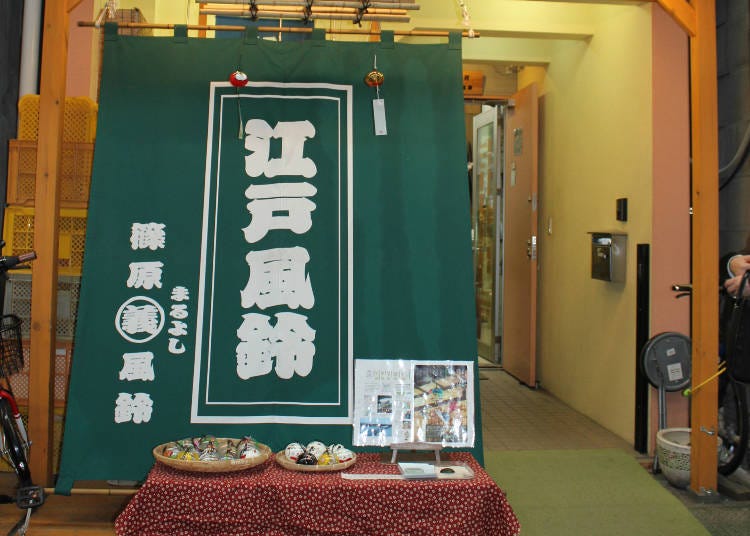
Wind Chime Experience, available in English. (Reservation via form, fax, or email)
・Experience from glassblowing to painting (about 1,5 hours): 2,000 yen (tax included)
※available for elementary schoolers and older. (Children below that age have difficulty blowing the glass)
・Painting experience (about one hour): 1,500 yen (tax included)
※The glassblowing experience is time-limited:
2017 schedule: mid-March to early July (first half), mid-September to early December (second half)
Inquiry & Reservation
TEL: 03-3832-0227
FAX: 03-3832-0225
Mail: maruyosi@sam.hi-ho.ne.jp
-
 LIVE JAPAN is certified by the beyond2020 program.
LIVE JAPAN is certified by the beyond2020 program.
- Area
- Category
*Prices and options mentioned are subject to change.
*Unless stated otherwise, all prices include tax.
Popular Tours & Activitiess
-

10 Must-Buy Cosmetics at Don Quijote (2025 Edition)
-

(12% OFF KKday Coupon) Mt. Fuji Autumn Leaves, Powder Snow & More! 15 Best Tours to Experience Japan in Fall & Winter
-
Ad

Okinawa Travel Troubles? Guide to the MCC Hotline for Illness and Weather Emergencies
-
Ad

Get Your Perfect Custom Suit at GINZA Global Style PREMIUM Ginza Honten: Choose from 5,000 Fabrics, Starting at 26,400 Yen (incl. tax)!
-

The Ultimate Guide to Mitsui Outlet Parks in Japan (2025 Edition) - Popular Tax-Free Malls & Coupon Info for Travelers
by: Guest Contributor
-
Ad

Just 2 Hours from Tokyo! Enjoy Ibaraki’s Breathtaking Ocean Views, Flowers & Autumn Leaves on Private Tours
Inspiration for Accommodations
-

Enjoy Mt. Fuji from the Comfort of Your Room! Recommended Ryokan with Mt. Fuji View
-

Stay Near the Cherry Blossoms! Hotels for Cherry Blossom Viewing in Tokyo
-

Family-Friendly Hotels with Free Shuttle to Disneyland: Convenient Access for a Magical Stay
-

Top Ranked Hakone Hotels with Mt. Fuji View: Enjoy Stunning Scenery from Your Private Space
-

Convenient Tokyo Hotels with Airport Shuttle: Ideal for Families and Heavy Luggage
-

Stunning Tokyo Tower View Hotels: Enjoy Spectacular Scenery from Your Private Space
-

Convenient Asakusa Hotels with Kitchens: Ideal for Extended Family Visits
-

Experience Luxury: Hakone's 10 Best Five-Star Accommodations
-

Enjoy Mt. Fuji Autumn Leaves! Top Hotels Near the Popular Autumn Leaves Corridor
-

Experience Hakone Fall Foliage from Your Room with Stunning Views
-
Ad

2022 Marks the 150th Anniversary of Japan’s first railway! “Trains will fly” at the Beyond Station Expo UENO?!
-

Tokyo’s Secret Coin Locker Spots: Big Enough for Suitcases!
-
Ad

Spring in Taito: Home to Ueno & Asakusa! Step off the beaten path and curate your perfect 1-day itinerary
-

Easy Day Trip from Tokyo! Ultimate Sightseeing Guide for Hakone & Lake Ashinoko!
-

[MOVIE] A Japanese Drum Experience at TAIKO-LAB
by: Holly Neslusan
-

Kichijoji – Explore Tokyo’s Top-Rated Stylish Suburb in Half a Day!
- #best ramen tokyo
- #what to buy in ameyoko
- #what to bring to japan
- #new years in tokyo
- #best izakaya shinjuku
- #things to do tokyo
- #japanese nail trends
- #what to do in odaiba
- #onsen tattoo friendly tokyo
- #daiso
- #best sushi ginza
- #japanese convenience store snacks
- #best yakiniku shibuya
- #japanese fashion culture
- #best japanese soft drinks


















